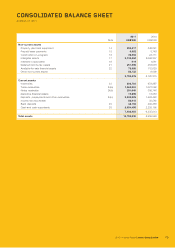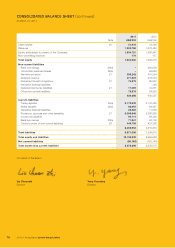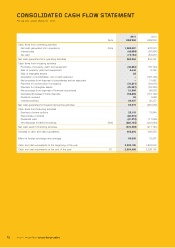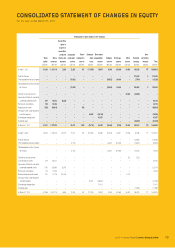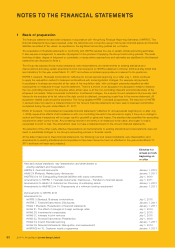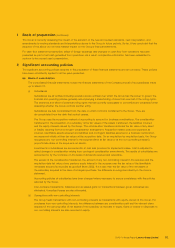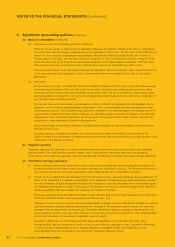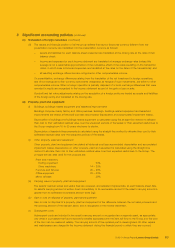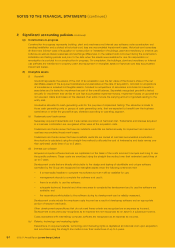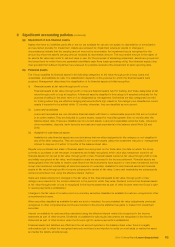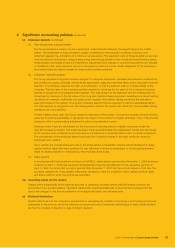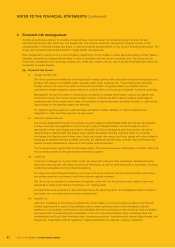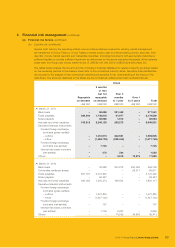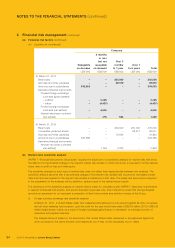Lenovo 2011 Annual Report Download - page 81
Download and view the complete annual report
Please find page 81 of the 2011 Lenovo annual report below. You can navigate through the pages in the report by either clicking on the pages listed below, or by using the keyword search tool below to find specific information within the annual report.
2010/11 Annual Report Lenovo Group Limited
84
NOTES TO THE FINANCIAL STATEMENTS (continued)
2 Significant accounting policies (continued)
(e) Construction-in-progress
Construction-in-progress represents building, plant and machinery and internal use software under construction and
pending installation and is stated at historical cost, less any accumulated impairment losses. Historical cost comprises
all direct and indirect costs of acquisition or construction or installation of buildings, plant and machinery or internal use
software as well as interest expenses and exchange differences on the related funds borrowed during the construction,
installation and testing periods and prior to the date when the assets were available for use. No depreciation or
amortization is provided for on construction-in-progress. On completion, the buildings, plant and machinery or internal
use software are transferred to property, plant and equipment or intangible assets at historical cost less accumulated
impairment losses.
(f) Intangible assets
(i) Goodwill
Goodwill represents the excess of the cost of an acquisition over the fair value of the Group’s share of the net
identifiable assets of the acquired subsidiaries and associates at the date of acquisition. Goodwill on acquisitions
of subsidiaries is included in intangible assets. Goodwill on acquisitions of associates is included in interests in
associates and is tested for impairment as part of the overall balance. Separately recognized goodwill is tested
annually for impairment and carried at cost less accumulated impairment losses. Impairment losses on goodwill are
not reversed. Gains and losses on the disposal of an entity include the carrying amount of goodwill relating to the
entity sold.
Goodwill is allocated to cash-generating units for the purpose of impairment testing. The allocation is made to
those cash-generating units or groups of cash-generating units, that are expected to benefit from the business
combination in which the goodwill arose, identified according to operating segment.
(ii) Trademarks and trade names
Separately acquired trademarks and trade names are shown at historical cost. Trademarks and licenses acquired
in a business combination are recognized at fair value at the acquisition date.
Trademarks and trade names that have an indefinite useful life are tested annually for impairment and carried at
cost less accumulated impairment losses.
Trademarks and trade names that have a definite useful life are carried at cost less accumulated amortization.
Amortization is calculated using the straight-line method to allocate the cost of trademarks and trade names over
their estimated useful lives of up to 5 years.
(iii) Internal use software
Acquired computer software licences are capitalized on the basis of the costs incurred to acquire and bring to use
the specific software. These costs are amortized using the straight-line method over their estimated useful lives of
up to 5 years.
Development costs that are directly attributable to the design and testing of identifiable and unique software
controlled by the Group are recognized as intangible assets when the following criteria are met:
– it is technically feasible to complete the software so that it will be available for use;
– management intends to complete the software and use it;
– there is an ability to use the software;
– adequate technical, financial and other resources to complete the development and to use the software are
available; and
– the expenditure attributable to the software during its development can be reliably measured.
Development costs include the employee costs incurred as a result of developing software and an appropriate
portion of relevant overheads.
Other development expenditures that do not meet these criteria are recognized as an expense as incurred.
Development costs previously recognized as an expense are not recognized as an asset in a subsequent period.
Costs associated with maintaining computer software are recognized as an expense as incurred.
(iv) Patents, technology and marketing rights
Expenditure on acquired patents, technology and marketing rights is capitalized at historical cost upon acquisition
and amortized using the straight-line method over their useful lives of up to 5 years.



